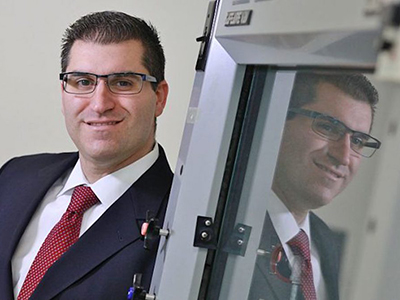Orange Innovation Fund Fall 2025 Grant Applications Open
Syracuse University graduate and undergraduate students can apply for the Fall 2025 round of Orange Innovation Fund grants now through Oct. 10 at midnight. Applications must be submitted as a single PDF to OrangeInnovation@syr.edu and must follow the template which…



 Golub and Johnson were designing and testing compounds that showed promise as anti-inflammatory agents, and TRB-N0224 went to the head of the pack as a candidate for commercialization in Traverse Bioscience’s suite of novel compounds. This drug is envisioned as the first FDA-approved, once-daily prescription for the prevention and control of canine and feline periodontal disease (the disease affects approximately 80 percent of dogs by age 3, particularly smaller breeds).
Golub and Johnson were designing and testing compounds that showed promise as anti-inflammatory agents, and TRB-N0224 went to the head of the pack as a candidate for commercialization in Traverse Bioscience’s suite of novel compounds. This drug is envisioned as the first FDA-approved, once-daily prescription for the prevention and control of canine and feline periodontal disease (the disease affects approximately 80 percent of dogs by age 3, particularly smaller breeds).